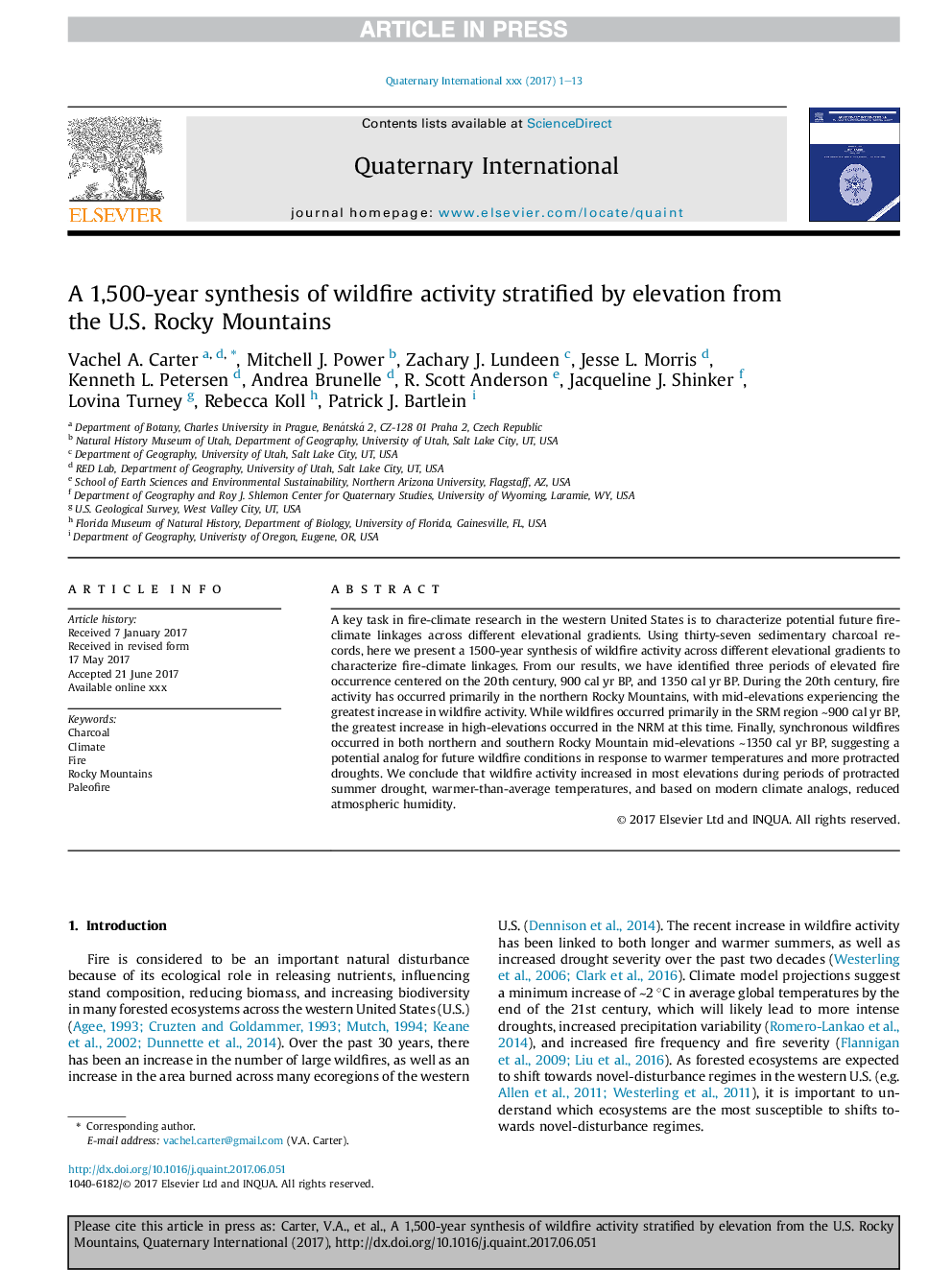| Article ID | Journal | Published Year | Pages | File Type |
|---|---|---|---|---|
| 7448866 | Quaternary International | 2018 | 13 Pages |
Abstract
A key task in fire-climate research in the western United States is to characterize potential future fire-climate linkages across different elevational gradients. Using thirty-seven sedimentary charcoal records, here we present a 1500-year synthesis of wildfire activity across different elevational gradients to characterize fire-climate linkages. From our results, we have identified three periods of elevated fire occurrence centered on the 20th century, 900 cal yr BP, and 1350 cal yr BP. During the 20th century, fire activity has occurred primarily in the northern Rocky Mountains, with mid-elevations experiencing the greatest increase in wildfire activity. While wildfires occurred primarily in the SRM region â¼900 cal yr BP, the greatest increase in high-elevations occurred in the NRM at this time. Finally, synchronous wildfires occurred in both northern and southern Rocky Mountain mid-elevations â¼1350 cal yr BP, suggesting a potential analog for future wildfire conditions in response to warmer temperatures and more protracted droughts. We conclude that wildfire activity increased in most elevations during periods of protracted summer drought, warmer-than-average temperatures, and based on modern climate analogs, reduced atmospheric humidity.
Related Topics
Physical Sciences and Engineering
Earth and Planetary Sciences
Geology
Authors
Vachel A. Carter, Mitchell J. Power, Zachary J. Lundeen, Jesse L. Morris, Kenneth L. Petersen, Andrea Brunelle, R. Scott Anderson, Jacqueline J. Shinker, Lovina Turney, Rebecca Koll, Patrick J. Bartlein,
